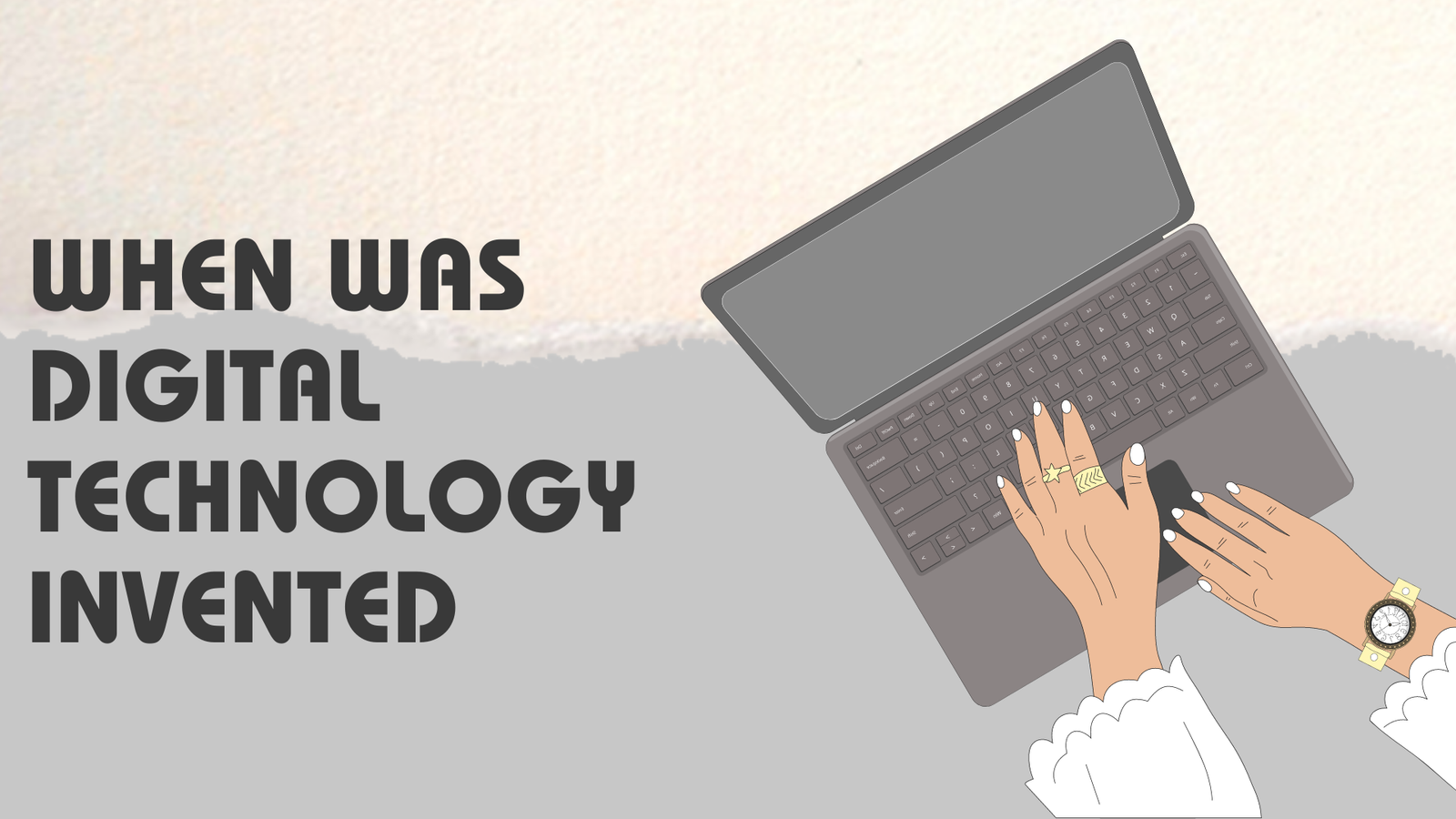The Evolution of Digital Technology
Digital technology is ubiquitous in our modern world, influencing every aspect of our lives. From smartphones and computers to digital cameras and smart appliances, it has transformed how we communicate, work, and entertain ourselves. But when was digital technology invented, and how did it evolve? Let us explore the fascinating history of digital technology.
-
The Birth of Digital Technology
The concept of digital technology can be traced back to the 19th century with the development of binary code, which represents information using only two symbols, the 0 and the The binary system became the foundation of digital data representation. In the mid-20th century, significant milestones paved the way for the digital revolution.
> Binary Code and Boolean Algebra (1833): British mathematician George Boole’s work laid the groundwork for digital technology by introducing Boolean algebra, a system of mathematical logic that forms the basis for digital circuit design and binary code.
> Telegraph and Morse Code (1837): Samuel Morse’s telegraph system used a binary-like code, Morse code, to transmit messages over long distances. This was an early application of digital communication.
> Electronic Computers (1930s-1940s): The development of electronic computers, such as the ENIAC and the Colossus, marked a significant leap in digital technology. These machines used digital circuits and binary code to perform complex calculations.
Transistors (1947): The invention of the transistor by John Bardeen, Walter Brattain, and William Shockley at Bell Labs revolutionized electronics. Transistors replaced vacuum tubes and enabled the creation of smaller & much more reliable digital devices.
-
– The Digital Revolution
The digital revolution gained momentum in the mid-20th century, with key developments which shaped the future of digital technology:
> Integrated Circuits (1958): Jack Kilby and Robert Noyce invented the integrated circuit known as the microchip. This tiny semiconductor device contained multiple transistors, enabling the miniaturization of digital components.
> ARPANET (1969): The precursor to the internet, ARPANET, was created by the U.S. Department of Defense’s Advanced Research Projects Agency (ARPA). It used packet-switching technology and digital communication protocols.
> Personal Computers (1970s-1980s): The introduction of personal computers, such as Apple II and IBM PC, brought digital technology into homes and offices. Graphical user interfaces (GUIs) made computers more user-friendly.
> Digital Cameras (1975): The first digital camera, which was developed by Steven Sasson at Kodak, captured images in digital format. It marked the beginning of the transition from film to digital photography.
> Internet Expansion (1990s): The World Wide Web, invented by Tim Berners-Lee in 1989, became publicly accessible in the early 1990s, sparking its exponential growth and transforming global communication.
> Smartphones (2000s): The introduction of smartphones combined mobile communication with computing power, creating a digital revolution in our pockets.
-
– Digital Technology Today
Today, digital technology has become an integral part of everyday life. It is ever-evolving and expanding, with several technologies shaping the modern landscape:
> Artificial Intelligence (AI): AI uses digital technology to mimic human intelligence, enabling tasks such as natural language processing, machine learning, and computer vision. AI applications range from virtual assistants to autonomous vehicles.
> Blockchain Technology (2008): Bitcoin’s creation introduced blockchain technology, a decentralized and secure digital ledger system. It has found applications in finance, supply chain, and digital currencies.
> Cloud Computing (2000s): Cloud computing allows the storage and access of digital data and applications over the internet. Revolutionizing data management and enabling remote work and scalable computing.
> IoT (Internet of Things): IoT connects everyday objects to the internet, allowing them to collect and share data. This technology is used in smart homes, healthcare, and industrial automation.
> 5G Connectivity: The rollout of 5G networks promises faster and more reliable digital communication, enabling advancements in remote surgery, augmented reality, and autonomous vehicles.
The invention and evolution of digital technology have profoundly impacted our society, enabling advancements in communication, computing, and countless other fields. From the binary code to the internet and up and beyond… Digital technology has continually pushed the boundaries making the impossible possible. As we look into the future, digital technology will undoubtedly play a central role in shaping how we live, work, and interact with the world around us.
More For You: When Was Electronic Technology Invented


Your posts provide valuable perspectives.
💰△ggongta.com△꽁타💰꽁타, 꽁머니, 꽁머니사이트, 꽁, 가입머니, 꽁머니공유방, 꽁머니홍보방, 꽁머니게시판, 꽁1만, 꽁3만, 꽁2만, 꽁5천, 꽁머니공유, 무료환전, 꽁타 – 꽁머니 홍보방, 환전가능한 꽁머니 사이트 추천
Wow wonderful blog layout How long have you been blogging for you make blogging look easy The overall look of your site is great as well as the content
thanks 🙂
My brother suggested I might like this blog He was totally right This post actually made my day You can not imagine simply how much time I had spent for this info Thanks
thanks sir
꽁머니 커뮤니티✔️꽁타✔️ggongta.com 아파하는 린가드 : 네이트 스포츠 – 네이트 뉴스
Hi i think that i saw you visited my web site thus i came to Return the favore I am attempting to find things to improve my web siteI suppose its ok to use some of your ideas